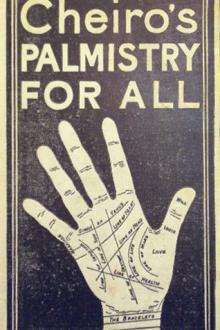The Diary - Samuel Pepys (red white and royal blue hardcover txt) 📗

- Author: Samuel Pepys
Book online «The Diary - Samuel Pepys (red white and royal blue hardcover txt) 📗». Author Samuel Pepys
Algernon Percy, tenth Earl of Northumberland, Lord High Admiral 1637 to 1642. ↩
Of the Navy. ↩
Southampton. ↩
Clarendon. ↩
Pepys was perhaps induced to make this purchase for his cousin, in accordance with the taste of the Duke of York, who, in allusion to Lady Chesterfield’s wearing green stockings, remarked, says Hamilton: “qu’il n’y avoit point de saint pour une jambe sans bas verds” (Mémoires de Grammont). —B. ↩
Sir Samuel Tuke, of Cressing Temple, Essex, Bart., was a colonel in Charles I’s army, and cousin to John Evelyn. He married Mary Sheldon, one of Queen Katherine’s dressers, and died at Somerset House, January 26th, 1673. We have seen that he was the translator of The Adventures of Five Hours. He was a Roman Catholic; and there is a life of him in Dodd’s Church History (vol. iii, p. 251). ↩
We may suppose that pews were by no means common at this time within consecrated walls, from the word being applied indifferently by Pepys to a box in a place of amusement, and two days afterwards to a seat at church. It would appear, from other authorities, that between 1646 and 1660 scarcely any pews had been erected; and Sir C. Wren is known to have objected to their introduction into his London churches. —B. ↩
Rochester was not yet twenty-one years old, whilst Charles was thirty-eight. —B. ↩
John, second Lord Robartes (Earl of Radnor, 1679), was appointed Lord Lieutenant May 3rd, 1669. ↩
“Buried, Mrs. Elizabeth, wife of Colonel Thomas Middleton.”
Register of St. Olave’s, Hart StreetAccording to Burke, Jane, daughter of Sir Robert Needham, of Lambeth, married Charles, brother of Sir Thomas Middleton, Bart. Her sister Eleanor was mistress to the Duke of Monmouth. —B. ↩
Then in Bishopsgate Without, on the north side of what was afterwards Liverpool Street. ↩
A comedy by James Shirley, first published in 1630. ↩
On the south side of Fleet Street, opposite St. Dunstan’s Church. ↩
Pepys’s attachment to the fair sex extended even to a dead queen. The record of this royal salute on his natal day is very characteristic. The story told him in Westminster Abbey appears to have been correct; for Neale informs us (History of Westminster Abbey, vol. ii, p. 88) that near the south side of Henry V’s tomb there was formerly a wooden chest, or coffin, wherein part of the skeleton and parched body of Katherine de Valois, his queen (from the waist upwards), was to be seen. She was interred in January, 1457, in the Chapel of Our Lady, at the east end of this church; but when that building was pulled down by her grandson, Henry VII, her coffin was found to be decayed, and her body was taken up, and placed in a chest, near her first husband’s tomb. “There,” says Dart, “it hath ever since continued to be seen, the bones being firmly united, and thinly clothed with flesh, like scrapings of tanned leather.” This awful spectacle of frail mortality was at length removed from the public gaze into St. Nicholas’s Chapel, and finally deposited under the monument of Sir George Villiers, when the vault was made for the remains of Elizabeth Percy, Duchess of Northumberland, in December, 1776. —B. ↩
Glass House Alley, Whitefriars and Blackfriars, marked the site for some years. The Whitefriars Glass Works of Messrs. Powell and Sons are on the old site, now Temple Street. ↩
A tragicomedy, altered by Thomas Shadwell from a comedy written by John Fountain, called The Rewards of Virtue, published in 1661. The Royal Shepherdess was published in 1669. ↩
An allusion to the popular ballad, “O Brave Arthur of Bradley,” which is referred to by Ben Jonson, Dekker, and other Elizabethan dramatists. There are two other ballads of “Arthur-a Bradley” of a later date. See Chappell’s Popular Music of the Olden Time, vol. ii, pp. 539–40, 604. ↩
Henry Savile was a younger son of Sir William Savile, Bart., of Thornhill, in Yorkshire, by Anne, one of the daughters of Thomas, first Lord Coventry, and sister to Sir William Coventry. He became Vice-Chamberlain to Charles II, and served in parliament for Newark; and died s.p. —B. ↩
A tragicomedy by John Ford, published in 1639. ↩
Sir William Turner, Merchant Taylor. ↩
As a symbol of his authority. ↩
The only printed notice of this dispute occurs in Pearce’s History of the Inns of Court and Chancery, 8vo., 1848, p. 236: “The Lord Mayor (Sir W. Turner) complained to the king, and on the 7th April, 1669, the case was heard before his Majesty in council. The ringleaders, Mr. Hodges, Mr. Wynn, and Mr. Monday, appeared at the Board, attended by counsel, who were heard on their behalf. Upon consideration, it appearing to the king that the matter very much depended upon the right and privilege of bearing up the Lord Mayor’s sword within the Temple, which, by order of Council on the 24th March, in the same





Comments (0)